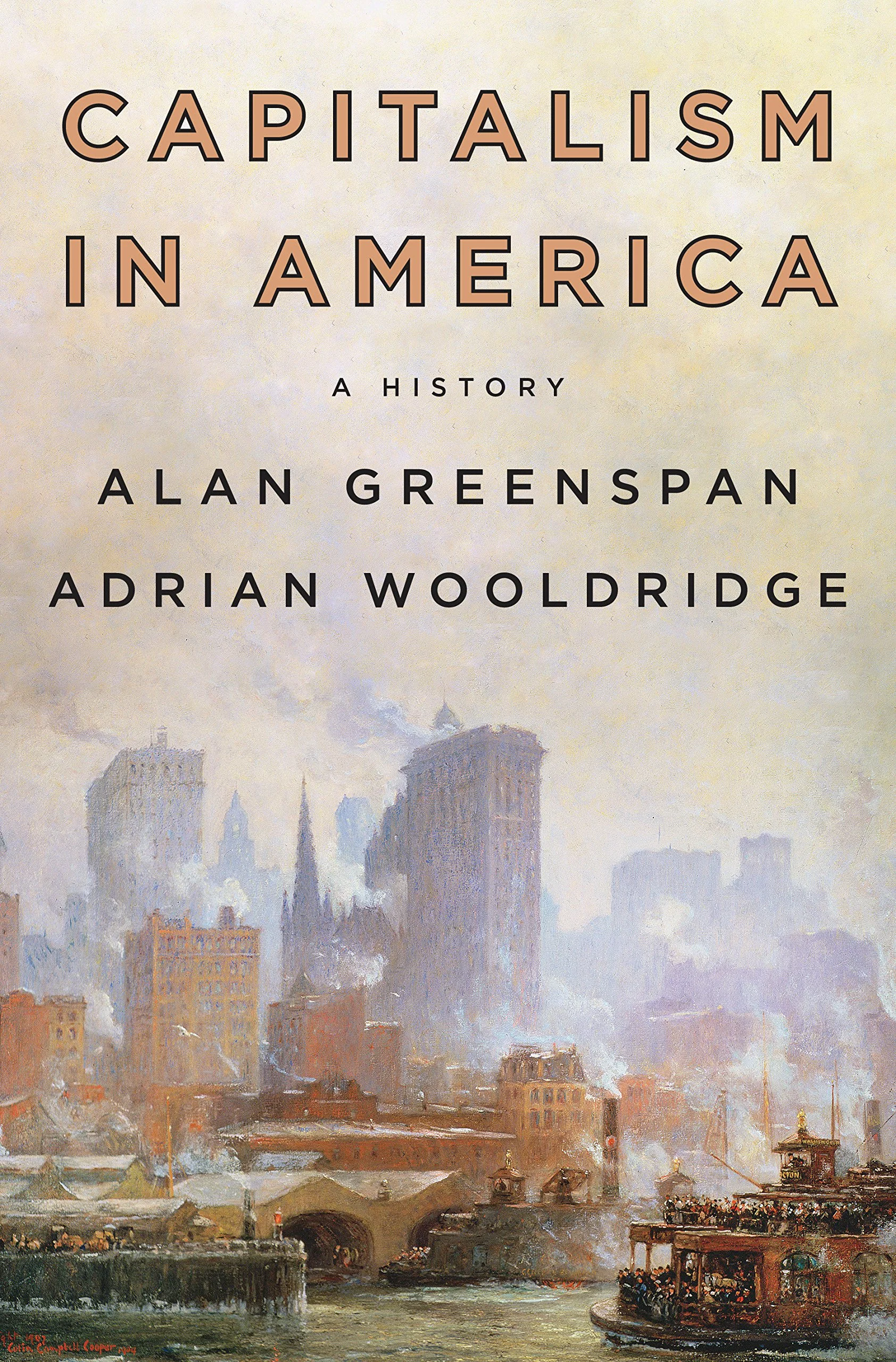Capitalism in America by Alan Greenspan and Adrian Wooldridge
/Capitalism in America: A History
by Alan Greenspan and Adrian Wooldridge
Penguin Press, 2018
“Capitalism in America: A History” by Alan Greenspan, the nonagenarian economist and Ex-Federal Reserve Chairman, and Adrian Wooldridge, political editor at The Economist, is an effective and sanguine book that delivers as promised.
The book has three capacious but effectively utilized themes: productivity, politics, and creative destruction. Our authors tell us “Productivity describes society’s ability to get more output from a given input.” This can be measured and described in a variety of ways. Indeed, one strength of the book is that peppered throughout are statistics and visualizations that bolster nearly all major points. Politics has two meanings. The first is that the Constitution sets up a framework in which productivity and creative destruction could express themselves:
The majority cannot trample on people’s rights to own private property, engage in trade and keep the fruits of their labor (including their mental labor). This did far more than anything else to guarantee America’s future prosperity – far more than conventional economic advantages such as abundant land and raw materials.
Second, politics is about policy. Examples would be the Hawley-Smoot tariff or New Deal and Great Society programs - incidentally, fans of these programs will likely not be fans of the book.
Creative destruction, lastly, is a term from the writing of the early 20th century economist Joseph Schumpeter describing how new innovations reduce and replace old capital structures (think automobiles replacing stagecoaches). In the book the term is used to capture the dynamics of economic change. Although the idea is given its due in the introduction and the conclusion of the text, in the body of the work it is little more than a buzz-word that can be called upon to emphasize dynamics. This leads our authors into Schumpeterian mistakes with their Schumpeterian language. For example, they tell us:
America’s new plutocrats were increasingly keen on flaunting their wealth as Schumpeter’s spirit of creative destruction gave rise to Thorstein Veblen’s disease of conspicuous consumption.
This is very similar to Schumpeter’s belief that “The very success [of capitalism] undermines the social institutions which protect it.” And, like Schumpeter, Greenspan and Wooldridge argue as if capitalism was something new. Strictly speaking, both points are false: capitalism was not new, creative destruction was not new, and conspicuous consumption was not new. So long as humans have creatively engaged with the world and freely exchanged goods and services all three of these have existed.
The mistake itself is not surprising because Joseph Schumpeter gleaned the term creative destruction from his reading of Karl Marx. In fact Marx is so present the above quote has a flavor of determinism to it. That is, reminiscent as it is of Schumpeter, it also calls forth Marx’s assertion that “The hand mill gives you society with the feudal lord; the steam mill society with the industrial capitalist.” There is an irony that in a sympathetic book about the history of capitalism it cannot shake capitalism’s greatest critic.
The book suffers somewhat because of the eminence and reputations of its authors. The conclusions are fairly conventional and not very different than standard textbooks on political economy: consensus about superiority of private enterprise with nods to market failure and externalities. This can give the reader a sense that a lot of intellectual power was summoned to tell us what we already know.
Additionally, Greenspan’s history as a former acolyte to objectivist philosopher Ayn Rand and, it almost goes without saying, time as Chairman of the Fed sets expectations for the knowing reader. Yet, if his name was erased from the cover there would be little evidence that a central banker had a hand in this text, much less an ardent libertarian.
Even so, Greenspan’s distinct voice does come through. A conspicuous moment is a not-so-subtly inserted insistence that “The Federal Reserve’s ‘easy money’ critics can’t establish a clear link between monetary loosening and the crisis.” A clear answer to criticisms that as Chairman of the Fed he had kept interest rates too low for too long.
In “Capitalism in America: A History” the experienced reader of economics and history will find material to quibble with and when Greenspan and Woodridge are not discussing high moments that are, frankly, difficult not to make interesting, the book drags tremendously. The main virtues of the book are that it is a decent summary of capitalism in America with brief but useful biographies of major figures sprinkled throughout that newcomers will find useful. The fate of the book is ultimately determined by the disappointing fact that the reader must slug through the troughs to reach such high points.
—David Murphy is obtaining a Masters of Finance at the University of Minnesota.
